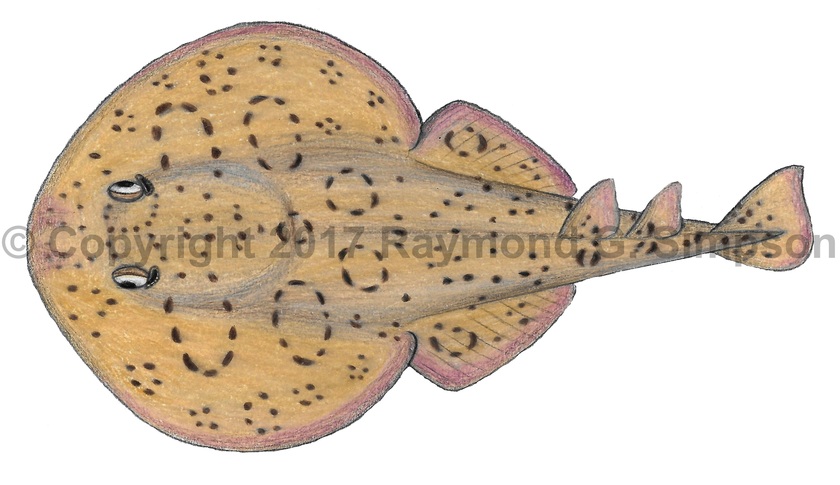
Common Name
Smallspotted Numbfish
Year Described
undescribed
Identification
Disk large, fairly thickened, and oval-shaped with kidney-shaped electric organs under each pectoral fin base. Body quite flat along entire width. Mouth relatively small with well developed labial cartilage. Teeth small but sharp and not visible when mouth is closed. Eyes large and projecting. Spiracles large with short papillae (less in small fish). Nostrils fused with broad nasal curtain. Pectoral fins short. Tail a little shorter than disk with low fleshy ridges. Dorsal fins about equal in size and rounded. Second dorsal a little taller. Inter-dorsal space much shorter than length of dorsal base. Pelvic fins broad and long, without projecting anterior lobes. Pelvic fins not joined. Claspers very short and stout. Caudal fin broad with a rounded to truncate posterior margin. Claspers longer and project beyond pelvic fin in males. Skin entirely smooth.
Color
Dorsum brown to brownish-gray with numerous small brown spots/semicircles forming large rings, small rings, and single speckles over the entire body. Spots are much smaller than orbit. Rings become more sparse on tail and rear fins. Area inside rings normally not darkened. Ventrum uniformly pale whitish.
Size
Maximum reported size to 62cm TL.
Habitat
Captured between 15-50m on continental shelves.
Range
Recorded from northern South America from Suriname to northeastern Brazil.
References
Compagno, L.J.V. 2002. Sharks. In: Carpenter, K.E. (Editor) FAO Identification Guide for Fishery Purposes. The Living Marine Resources of The Western Central Atlantic. Volume 1: Introduction, mollusks, crustaceans, hagfishes, sharks, batoid fishes, and chimaeras. ASIH Special Publication No. 5. FAO, Rome.
Garcia Jr, J., L.F. Mendes, C.L.S. Sampaio & J.E. Lins Oliveira. 2010. Biodiversidade marinha da Bacia Potiguar: Ictiofauna. Museu Nacional. 195 pp.
Other Notes
This species has been reported from northern South America by Compagno (2002) and Garcia Jr et al. (2010) but remains undescribed. It is part of the complex of species including Narcine bancroftii and N. brasiliensis. Whether it is clinal variation between the two populations, a distinct species, or a color form of one of them remains to be seen. As it’s morphology is close to the other two species, the identification scheme is kept identical to them.